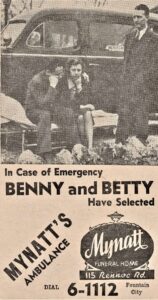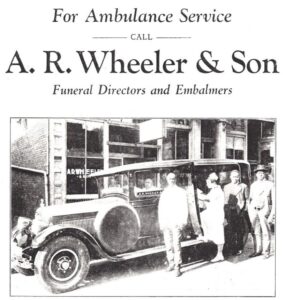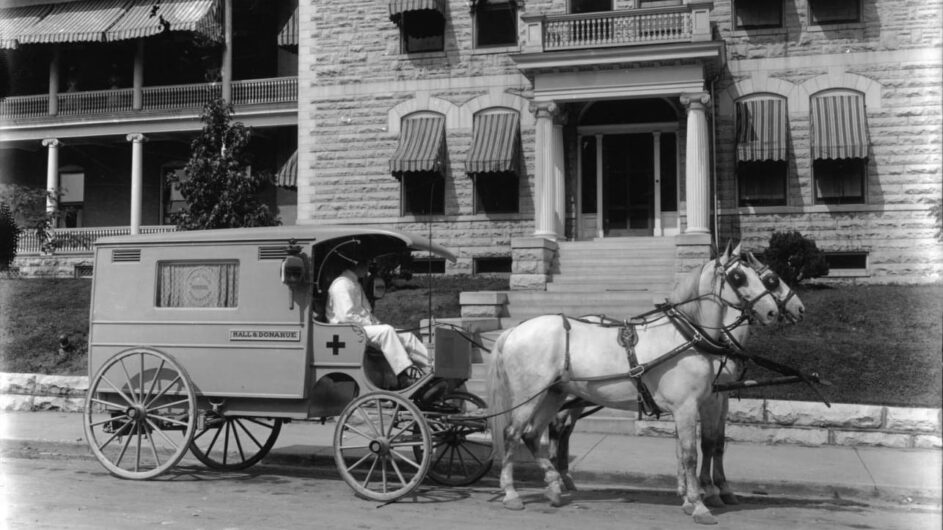A classified ad you wouldn’t see these days is one for ambulance service, and the notion that there would be anything other than an ambulance reached anyway other than dialing 911 is lost on those born after, roughly, 1970.
While the changeover occurred gradually and regionally, back in the day, for those born prior to that time (within my lifetime and I’m not yet 60) calling an ambulance meant calling your nearest funeral home. Yes, if you needed a ride to St. Mary’s Hospital, you’d call Mynatt’s, Gentry (now Gentry-Griffey), Berry or whichever house of the dearly departed was closest by. If they were already busy, you tried the next one.

Old ad from Mynatt’s Funeral Home. Photo credit KNS digital archives.
Entertaining might not be the right word, but it was certainly interesting that once such business made sure to promote its “late model Pontiacs, Cadillacs” and saving the “Red Cross trained personnel” for last. The history of mortuaries serving as ambulances dates to the Civil War, and a wise acre or 10 might remark that it was a fine set up for providing additional services. Ahem.
I have a touch of familiarity with the mortuary world as my great uncle, Bill Payne, worked most of his life for Mynatt’s Funeral Home in Fountain City. He suffered a fatal heart attack while driving the hearse back in 1978, but he did get safely pulled out of traffic. My father worked at Gentry when he was a young man, and he was not a fan of pulling ambulance duty. Part of that had to do with lack of real medical training.
Prior to what we now consider ambulance service to be, it was more about getting someone safely in the vehicle and to the nearest hospital as quickly as possible and less about life saving measures en route. While the attendants may have had some basic first aid training or there might even be some oxygen on board, these services weren’t manned by paramedics.
Some of the funeral homes even had their own air ambulance services. Berry Funeral Home tragically lost two of its staff in 1963 on a return trip from delivering a patient to New Jersey in the company’s single engine Beechcraft Bonanza. It crashed in the Unaka Mountains of North Carolina killing pilot Kenneth Jenkins, 29, and Jimmy Harris, 21, an apprentice embalmer.

Beck Cultural Center archives
Ambulance services were first added to the Knoxville Fire Department in 1949, but at the time it was one vehicle, not enough to provide for the whole city, much less the county. But it was a start. The 1947 Chevrolet ambulance was purchased from the Service Cab Company and came equipped with an Emerson resuscitator with an oxygen supply. It was some high falootin’ technology for these parts.
From the mid-1960s to the mid-1970s, changing regulations and certification requirements at the federal level brought an end to ambulance services from mortuaries. The Highway Safety Act of 1966 set parameters on emergency medical care as well as ambulance design. One of the silver linings of the Viet Nam War was improvement in trauma care as battlefield treatment informed civilian care (helicopters played a huge role in survival rates, but that’s another story).
Beth Kinnane writes a history feature for KnoxTNToday.com. It’s published each Tuesday and is one of our best-read features.
Source: Knoxville News Sentinel digital archives

